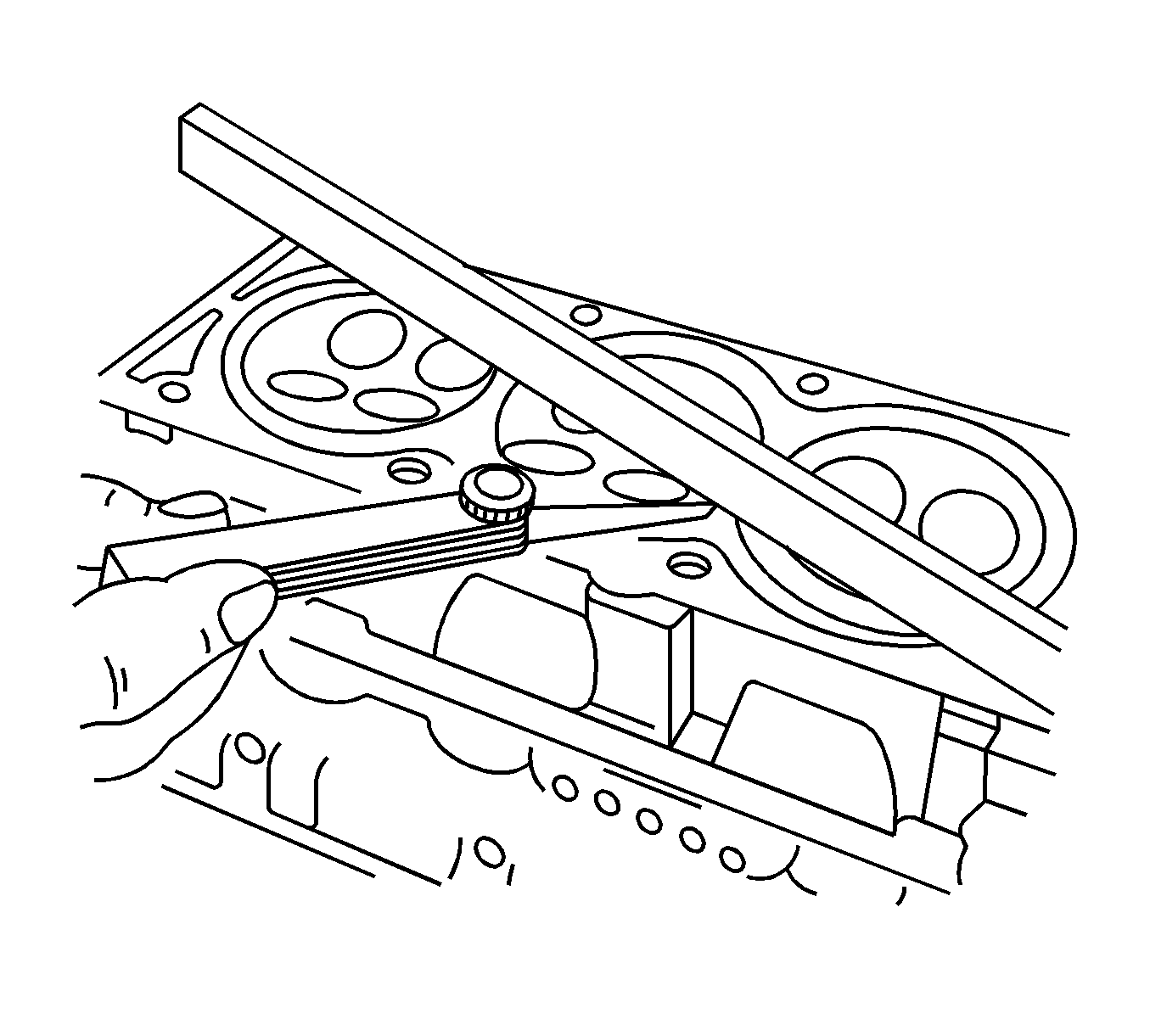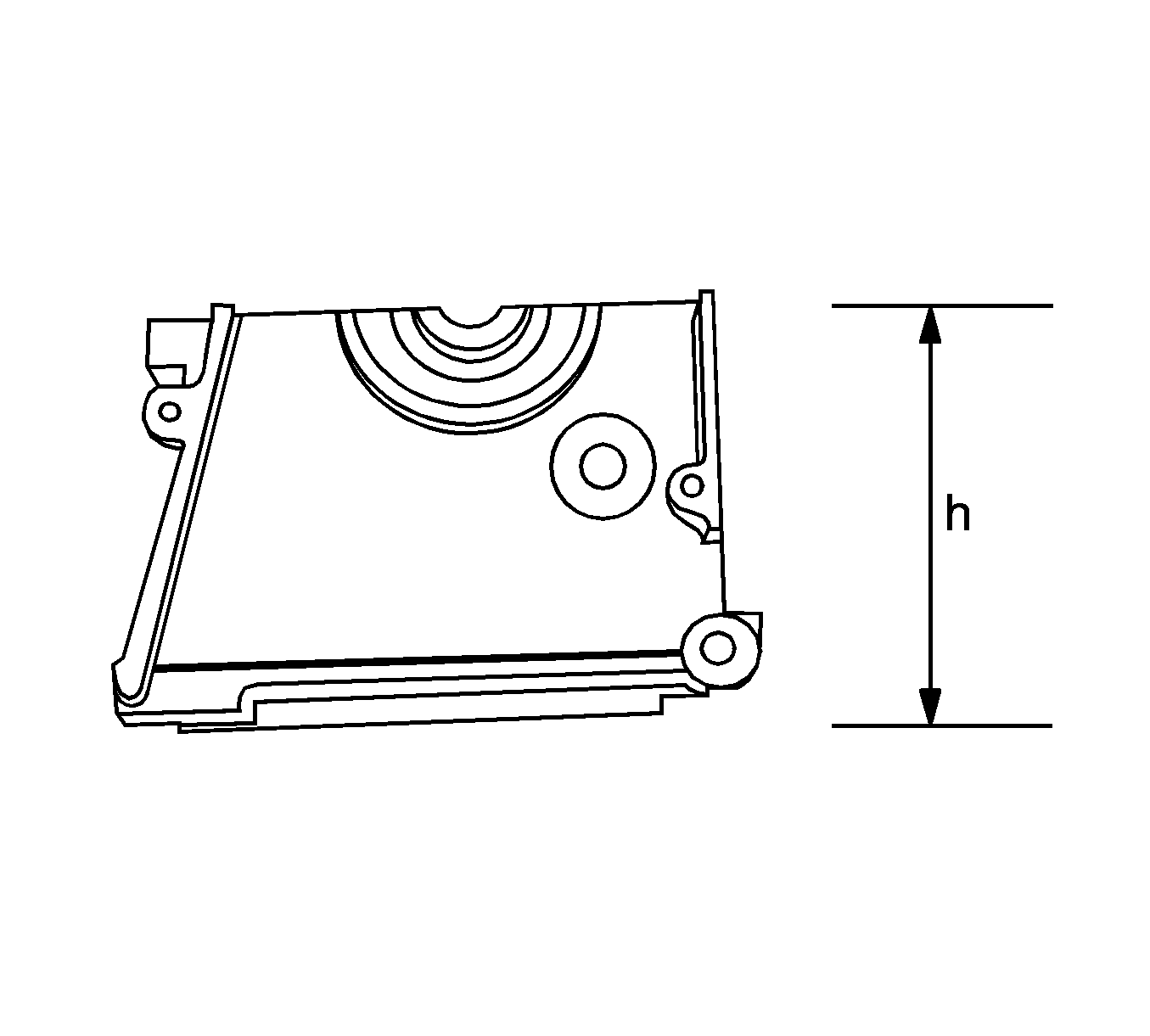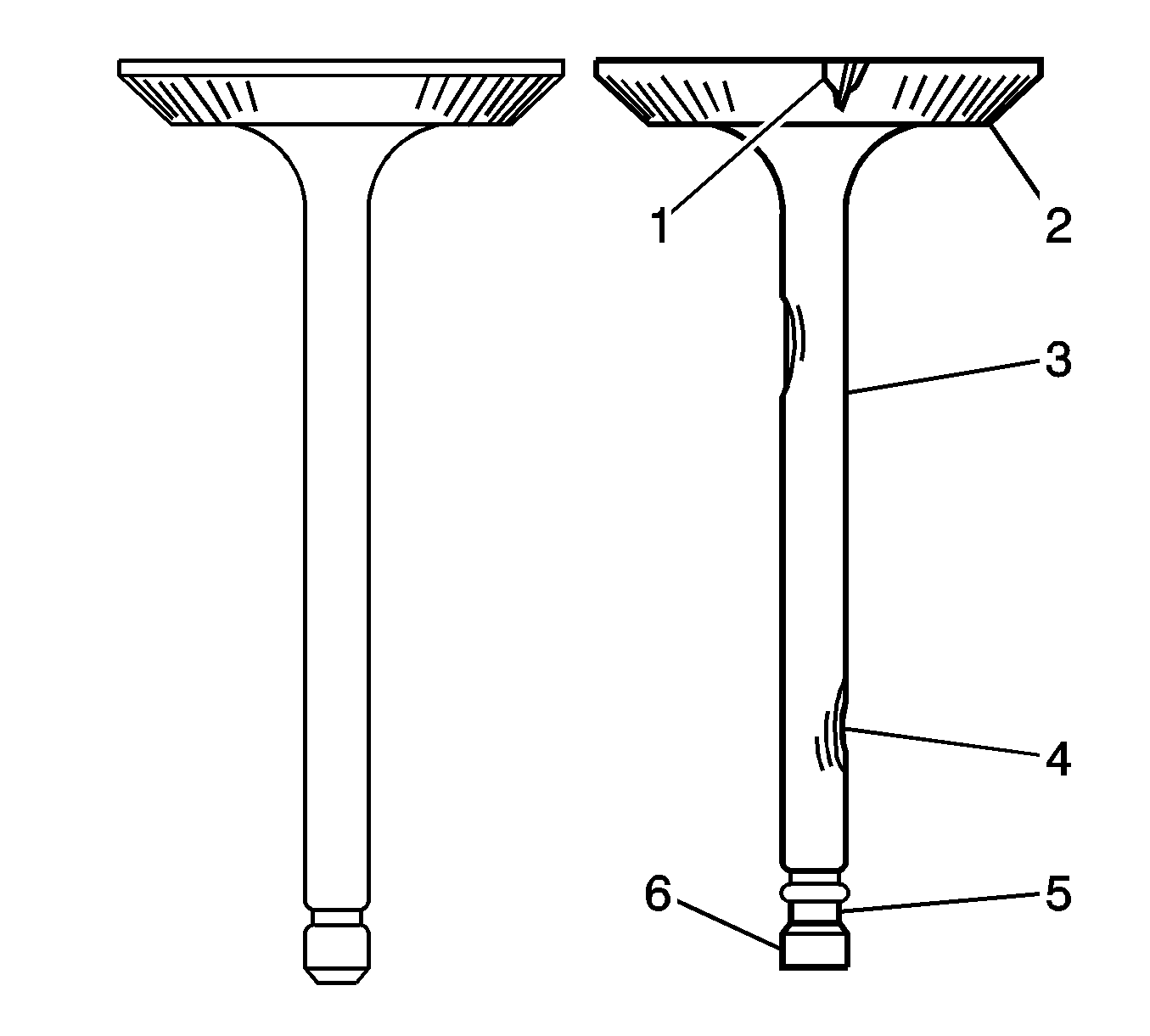Cleaning Procedure
- Clean the cylinder head.
- Clean the valve guides.
- Clean all of the threaded holes.
- Clean the valves of carbon, oil, and varnish.
Cylinder Head Inspection

- Clean the sealing surfaces.
- Inspect the cylinder head for the following:
| • | Cracks, damage or pitting in the combustion chambers |
| • | Debris in the oil galleries--Continue to clean the galleries until all debris is removed. |
| • | Coolant leaks or damage to the deck face sealing surface |
| • | Damage to any gasket surfaces |
| • | Damage to any threaded bolt holes |
| • | Burnt or eroded areas in the combustion chamber |
| • | Cracks in the exhaust ports and combustion chambers |
| • | External cracks in the water passages |
| • | Restrictions in the intake or exhaust passages |
| • | Restrictions in the cooling system passages |
| • | Rusted, damaged or leaking core plugs |
- If the cylinder head is cracked or damaged, it must be replaced. No welding or patching of the cylinder head is recommended.
- Measure the clearance between the straight edge and the cylinder head deck face using a feeler gauge at four points along the straight-edge.
- Check the sealing surfaces for deformation and warpage. The cylinder head sealing surfaces must be flat within 0.05 mm (0.002 in) maximum.

- Measure the height of the cylinder head from sealing surface to sealing surface. The cylinder head height should be 129.9-130.1 mm (5.1142-5.1220 in).
If the cylinder head height is out of specifications, replace the cylinder head.
Valve Inspection

- Inspect the valve for damage from the head to tip for the following conditions:
| • | Pitting in the valve seat area (1) |
| • | Lack of valve margin (2) |
| • | Bending in the valve stem (3) |
| • | Pitting or excessive wear in the stem (4) |
| • | Worn valve key grooves (5) |
- Replace the valve if any of these conditions exist.
- Inspect the valve springs. If the valve spring ends are not parallel, replace the valve spring.
- Inspect the valve spring seating surface of the valve rotators for wear or gouges. Replace as required.



